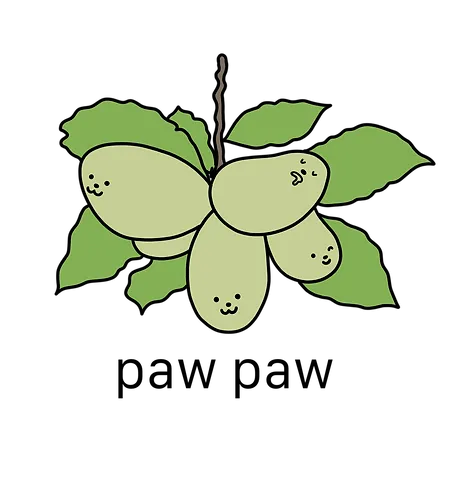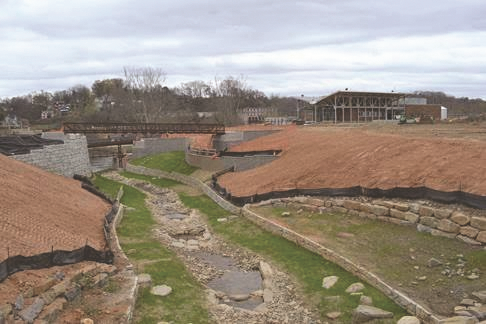Fight Ecological Simplification with Native Diversity!
Native plants are a solution to the increasing ecological simplification. Learn more about South Carolina and Charleston native plants.

by Max Bisaha
“I came to see myself as growing out of the earth like the other native animals and plants. I saw my body and my daily motions as brief coherences and articulations of the energy of the place, which would fall back into it like leaves in the autumn.” -Wendell Berry
To many, walking in a forest elicits a sense of humility and awe at the varying plants, fungi, and animals all interacting in what becomes an ecosystem. The array and complexity of these interactions surpasses the knowledge of human culture’s cumulative effort to understand it. Devastatingly, these ancient life-support systems face numerous threats. The forests, oceans, and grasslands we see today are very different from what they were. Over the last few centuries, much has happened to the world we live in: massive logging operations, industrialized agriculture, skyrocketing greenhouse gas concentrations, the creation of the suburban yard, and hundreds of introduced non-native plant, animal, and fungal species that have spread throughout the continent, to name a few. But all of these trends follow the same pattern of intense and systematic environmental (and consequently social) simplification. Forests, farms, and yards have all become less diverse — and as we know, simplification is no recipe for resilience.
Planting native plants, especially perennials, comes with a long list of benefits. Among the benefits are their ability to mitigate flooding and return water to the atmosphere; provide cooler microclimates; build healthy soil; provide habitat for a wide variety of insects, animals, microbes, and fungi; control mosquito and wasp populations; provide food; and sequester carbon. In addition, there are less tangible reasons to plant native as well, such as the empowerment of being part of the solution to our ecological crises and making a space that allows for a free and private relationship with the more-than-human world.
So why are native plants part of the solution to our problem of ecological simplification? Why not use other more “exotic” species? After all, more plants equals more diversity. But it is not that simple. The key lies in the tremendously long history of coevolution that native plants have gone through to adapt to the land and their fellow insects, microbes, and animals. Native ecosystems are the product of millions of years of organisms interacting both competitively and symbiotically to create a balanced yet dynamic system. They are fine-tuned and highly adapted to each other. But when a plant like a Bradford pear, Mimosa tree, or a Kudzu is introduced, they have little to no ecological significance. They have little to no relationships. Because they have no predators to check their population, they can take over whole landscapes. This is why we must landscape better and fight these trends. Here are a few tips to diversify your yard:
- Lay down compost, preferably locally-made, which mostly consists of organic matter, the most essential part of healthy soil.
- Plant native keystone species like Longleaf pine, Milkweed, Goldenrod, and Red oaks. Also be sure to incorporate grasses, trees, shrubs, wildflowers, and vines in order to include all stories of a diverse ecosystem.
- Mulch around plants or use low-lying cover plants, which moderate soil temperature, retain moisture, and encourage microbial life. Soil should never lay bare.
- Consider prescribed burning on large areas of land, which has a wide range of benefits for increasingly rare fire resistant forest communities (such as that of southern yellow pines). This practice was used for thousands of years by natives and then by colonial settlers before anti-fire forestry became dominant.
- Leave leaves where they rest as much as you can. Most caterpillars pupate in and under leaves. Leaves are also fertilizer and mulch and make great compost when mixed 2:1 with kitchen waste. No need to worry about smell or animals. Well-maintained compost free of raw meats attracts no animals and does not smell.
- Minimize or cut out white nightlights which devastate insect populations. Insects are near the base of the food chain and so are essential for healthy bird, bat, amphibian, and small mammal populations.
- Don’t spray synthetic pesticides, herbicides (particularly glyphosate or Roundup), or fertilizers unless tackling a severe invasive species problem (poison ivy is not an invasive plant). These chemicals leach into the soil and water streams often with harmful effects to human and non-human life. Also, they are extremely energy intensive to make and transport.
- Remove invasive plants. Particularly mimosa, tree of heaven, Chinese privet, autumn olive, English ivy, and asiatic bittersweet, among many others. Severe invasives often engulf whole ecosystems leaving a tangled monoculture. On small properties these can be removed with a bit of labor by pulling or repeatedly cutting.
All of these tactics simply accelerate the way nature already works. Want a cost effective way of rewilding? Don’t mow a portion of your lawn (be sure to pull, spray, or burn invasives) and watch it grow into a native plant and animal sanctuary. Additionally, on larger tracts of land. Consider applying for state or federal grants which have cost share programs for burns, invasive removal, and forest thinning.
Discussing native plants causes me to reflect on what makes a people native to a place and what parallels many Native peoples have with native plants. Is it simply a semantic coincidence that both share the same adjective? I don’t think so. As a white person who belongs to a culture that has been, and continues to be, oppressive and disdainful toward the people whose land we now stand on, it seems important to consider the relationship between Native people and their environment, and colonizer culture and its connection to the environment.
One of the central themes that I can discern is that Native people have come to understand that they are deeply interwoven into a much larger web of connections and relationships without which they would perish.
Native scholar Gregory Cajete echoes this idea, first acknowledging the diversity of the world's indigenous people but then arguing that “their fundamental way of relating to the natural world is remarkably similar… Native community is about living a so-called symbiotic life in the context of a symbolic culture, which includes the natural world as a vital participant and co-creator of community. That is to say, the life of indigenous community is interdependent with the living communities in the surrounding natural environment.”
For instance, it is not in the best interest of the invasive Emerald Ash Borer to wipe out Ash forests, as it is currently doing, because it will soon lose the very species it depends its survival on. In the same way, it does not behoove humans to warm our atmosphere, because we need it to continue maintaining the type of climate that is conducive to our species and all the others we share this planet with. Most native people understand these relationships, as do native plants. In addition to caring for the land, it will require a cultural reckoning in which we as a nation own up to the fact that we have inherited a system that has systematically tried to annihilate Native peoples and their cultural traditions. Perhaps in our effort to cultivate and encourage native plants back on our lands we can move one step forward toward learning what it means to be native to a place and what that will require of us.
Learn more and get involved:
- Nature’s Best Hope: A New Approach to Conservation That Starts in Your Yard by Douglas Tallamy
- Invasive Plant Pest Species of South Carolina
- South Carolina Native Plant Society
- South Carolina Wildlife Federation
- Plant Conservation Alliance
- Long Leaf Pine Alliance
- The American Chestnut Foundation
Native South Carolina Plants
Captions by Max Bisaha
Illustrated by Markelle Evans
Pawpaw (Asimina triloba)

North America’s largest edible fruit. Native people used the inner bark for cordage. Burgundy colored flowers come out in early spring.
Longleaf pine (Pinus palustris)

Once abundant in the southeast, this tree was heavily tapped and logged for naval stores and lumber. The endangered Red-cockaded woodpecker makes its home in live longleaf pines. This forces the tree to produce large amounts of sap, protecting the nest from predators. Needles are often used for basket weaving.
Goldenrod (Solidago sp.)

Numerous folk medicine uses. Notable for being a host to numerous pollinator species of wasps, flies, bees, butterflys, and moths.
Bald Cypress (Taxodium distichum)

Many people associate the terms deciduous and conifer as antonyms. Not so with this tree which loses its needles in the winter. Rot resistant lumber often used as shingling and for boat building.
Butterfly weed, milkweed (Asclepias tuberosa)

Milkweeds are the only plant that the monarch caterpillar, whose population has been steadily declining for decades, feed on. Snapping their branches yields a white milky liquid.
American beautybush (Callicarpa americana)

Clusters of iridescent purple berries are loved by wildlife for food and people for dye. Good understory shrub and substitute for boxwood.


